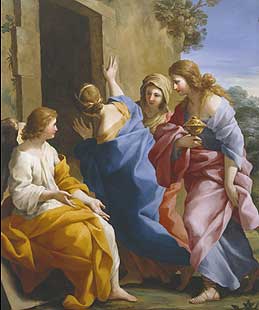

James Fairfax, inextricably linked with the history of Australian publishing, was, for many years, director and chairman of Fairfax media empire. The Fairfax ownership was one of the longest continuous family ownerships of any English-speaking publishing house in the world. Following the sale of John Fairfax Ltd in 1991, James Fairfax wrote his autobiography, My Regards to Broadway: a Memoir (published 1992).
The James Fairfax Collection presents the most splendid European art ever displayed on the walls of the Art Gallery of New South Wales and certainly the most personal. The exhibition includes James Fairfax's major gifts to the Art Gallery of New South Wales and other public galleries from around Australia, together with his private collection, the majority of which has never been publicly exhibited.
To mark the occasion of the first public exhibition of this remarkable collection, the Art Gallery of New South Wales is publishing a substantial, comprehensive, fully researched and richly illustrated catalogue. This exhibition and publication provide a wonderful insight, revealing the extent of the remarkable personal achievement of James Fairfax.
Edmund Capon, Director of the Art Gallery of New South Wales said:
"A private, independent and quietly passionate collector, James Fairfax has over the past four decades assembled the finest private collection of European Old Master paintings, prints and drawings in Australia. The quality and distinction of the works he has acquired would grace any of the world's great public institutions."
James Fairfax is also one of this country's greatest philanthropists. The European art collection of the Art Gallery of New South Wales has been transformed through his generosity and commitment and now the entire Fairfax collection of European art is to be displayed in the galleries that bear his name.
Over the years, James Fairfax has donated to this Gallery works by such masters as van Ruisdael, Rubens, Canaletto, Claude, Boucher, Amigoni, Domenico, Tiepolo, van Mieris and drawings by Ingres, Watteau, Fragonard and Greuze. These gifts have enriched the collection and provided impetus and direction to the development of this previously under-represented aspect of the Gallery's collection.
James Fairfax's private collection has continued to expand and now includes major paintings by Titian, Moroni, Ter Brugghen, Rubens, Solimena, Guardi, David and Samuel Palmer as well as a magnificent group of prints and drawings by D�rer, Rubens, Rembrandt, Giambattista Tiepolo, Delacroix and G�ricault.
Many of his newly acquired works of art are recent discoveries: paintings that have remained silent in international private collections for generations, unknown to scholars and public alike. Moroni's Portrait of a man, c.1565 was unknown at the time of the publication of the catalogue raisonn� of the artist in 1979. By coincidence, a fascinating and beautiful early portrait by Rubens of Ferdinando Gonzaga as a boy, c.1601-02 went unrecognised at the turn of the last century because it was thought to be by Moroni.
The Crowning with Thorns, c. 1625, a masterpiece from Ter Brugghen's mature period, was sold in 1994 as the work of an unknown Italian painter. It has yet to take its place in the Ter Brugghen literature and will be published in the Fairfax Collection catalogue for the first time.
Particularly satisfying was the emergence in the Paris sale-rooms in 1995 of David's portrait of Dominique-Vincent Ramel de Nogaret, 1820 a masterpiece of the artist's declining years spent in exile in Brussels after the upset of the French Revolution. In 1989, James Fairfax had bought David's portrait of Madame Ramel, c.1820. In 1995, he was able to reunite her with her husband.
In the late 1990s, James Fairfax also turned his attention to the collecting of prints. He assembled a group of Rembrandt etchings, which include some of the finest in existence, one of which comes from the collection of the British Museum in London. This etching is a lustrous and velvety early impression of Saint Jerome in an Italianate landscape, c.1653 rare for being printed on a type of 'oatmeal' paper which Rembrandt used only from time to time.
The Art Gallery of New South Wales has some good prints, but nothing to compare with those of the Fairfax collection. The Fairfax collection also now includes two superb engravings by D�rer, including a fine impression of the iconic image of Melancholy, which has some claim to be called the 'Mona Lisa of printmaking'. |